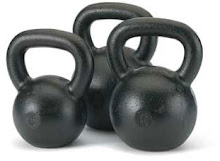Time for a History Lesson
Vladimir Janda was one of the most influential physical medicine physicians in the world in the late 20th century. A pioneer in the field of "low tech" rehabilitation, he honed his skills in communist Czechoslovakia. While western physicians were producing "human wreckage," with surgical techniques for the lumbar spine, Janda consistently produced outstanding results in rehabilitating the same types of cases using wobble boards, sticks, exercise balls, kettlebells, and, most importantly, his hands. After the fall of the Soviet Union and the formation of the Czech Republic, Janda and his colleagues became more accessible. In the early nineties, a group of progressive thinking chiropractors and physical therapists began teaching Janda’s techniques in the West, and changed the way most of us looked at physical medicine.
One of the more basic (but essential) Janda concepts is the Lower Cross Syndrome. Lower Cross Syndrome is epidemic in western society because most people spend a large percentage of their time sitting. This can cause tightness and hyperactivity in the hip flexor group (iliopsoas etc.). Through a process known as reciprocal inhibition (defined as the contraction or activity of one muscle group inhibiting the contraction or activity of the antagonist muscle group), the hyperactive or tight hip flexor group can actually inhibit the hip extensor group, most importantly, the gluteus maximus. This imbalance then produces a secondary effect during walking. Since these people are unable to produce hip flexion with the gluteus maximus, they begin to substitute the low back extensors. They in turn become tight and hypertonic and through reciprocal inhibition inhibit the abdominal muscles. Thereby producing a "big gut, no butt" scenario (usually aided by poor diet and no exercise). Lifting and walking using primarily the low back extensors cause an increase in biomechanical stress in the lumbar spine producing chronic pain, osteoarthritic degeneration, and disc herniation.
A key challenge to anyone treating low back pain is how to permanently correct this dysfunctional pattern. In my previous life (before kettlebells), I would use wobble boards, exercise balls and other "low tech" solutions. While effective, the exercises tended to be complicated (as well as boring) for the patient and more than one tool would often be necessary. When I started learning about kettlebells, I was excited at how such simple movements (the swing, clean, press and snatch), in addition to being amazing cardiovascular and strength conditioning exercises, actually corrected many of the movement pattern disorders I had been trained to identify. The most common of these was the Lower Cross Syndrome. What is amazing is that it seems as if the kettlebell swing was specifically designed to correct this pattern. Proper swing technique involves lowering the kettlebell via lumbar spine neutral hip flexion and then producing power via lumbar spine neutral hip extension (aka the hip snap). This simultaneously stretches and relaxes the hip flexors, activates and strengthens the hip extensors (particularly the gluteus maximus), and teaches lumbar spine control. Additionally, the secondary part of the swing, abdominal contraction at the apex of the swing, facilitates and strengthens the abdominals and relaxes and stretches the lumbar paraspinal musculature; a fantastic win/win scenario!!
In summary, performing or teaching the swing exercise not only gets you or a client/patient in shape, it also has a corrective effect on one of the most common dysfunctional lifestyle patterns of the western world!!



No comments:
Post a Comment